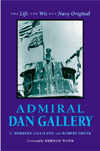Endurance
A History of RAAF Aircrew Participation in Liberator Operations of RAF Coastal Command 1941-1945
Jay, Alwyn
1996, Banner Books
ISBN 1875593071
224 pages
| Type. | General History/Personal Narrative |
| Pros. | Authentic commentary from a large number of veterans and primary sources. Fresh information and interesting photos on many aspects of Liberator operations. |
| Cons. | A small proportion of historical inaccuracies in post-attack analysis. |
| Rating. |  |
 Approximately 500 Australian aircrew helped to man
the nine Liberator squadrons operated by RAF Coastal
Command in WW2. The 'VLR' (Very-Long-Range)
Liberator, stripped of excess weight and packed with
extra fuel, was the aircraft which finally closed
the mid-Atlantic 'air gap' and relegated
Dönitz's wolfpacks to history. By the end of the
war, the Liberator had become most successful Allied
aircraft type in the war against the U-boats.
Approximately 500 Australian aircrew helped to man
the nine Liberator squadrons operated by RAF Coastal
Command in WW2. The 'VLR' (Very-Long-Range)
Liberator, stripped of excess weight and packed with
extra fuel, was the aircraft which finally closed
the mid-Atlantic 'air gap' and relegated
Dönitz's wolfpacks to history. By the end of the
war, the Liberator had become most successful Allied
aircraft type in the war against the U-boats.
RAAF navigator Alwyn Jay served with 120 Squadron RAF, flying from Iceland and Northern Ireland in 1943/44. He has written this fascinating history of the operations of the RAF Liberator squadrons in the Battle of the Atlantic, as seen through the eyes of the Australian aircrews who traveled so far from home to be there. Some Australians were involved from the time of the first tentative VLR Liberator patrols in September 1941, and Australians eventually contributed about 20% of the aircrew strength of these squadrons.
Jay describes the regrettably slow build-up of the VLR Liberator force, hampered my many factors, especially political muddles and inter-service rivalry on both sides of the Atlantic. Eventually, the priorities were sorted out and the Liberators became a force to be reckoned with. By the end of the war Coastal Command was mounting hourly patrols over all UK waters and even making long-range strikes into the Baltic training areas of the potent new type XXI U-boats. However, the late-war schnorkeling U-boats were vastly more difficult to detect and the constant air patrols recorded relatively little success against them in return for the effort expended.
Jay provides a wealth of interesting operational detail, with excellent photographs and clear descriptions of the radar, weapons, tactics and navigational aids used. He also relates several amusing anecdotes and explains the many sobering operational dangers - including attacks from German fighter aircraft, U-boat flak and the appalling flying weather which often prevailed. Many attacks against U-boats are mentioned. In particular, those on U-200, U-470, U-621 and U-867 are well-covered, with multiple photographs and some heartening tales of post-war meetings and reconciliation between the former enemies. A general historical commentary ties the individual stories together.
Primary sources such as wartime logbooks have been extensively used by Jay. Ironically this introduces some errors concerning the fates and identities of certain U-boats, which have since been revised by modern historical research. One other minor criticism is that Jay's aim of mentioning all participating RAAF crewmembers does tend to slow the story down in places. However, these flaws are insignificant when compared with the strengths of this first-hand account of Liberator operations.
Review written by James Oglethorpe, Sydney, Australia.
Published on 17 May 2002.
Purchase information: (info) Get Endurance now at amazon.co.uk
Get Endurance now at amazon.co.uk
Return to our main review page.



